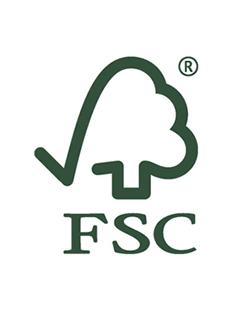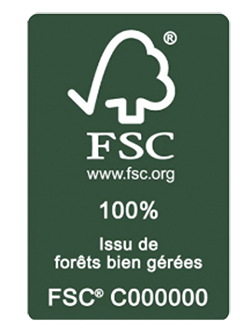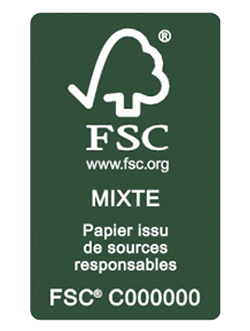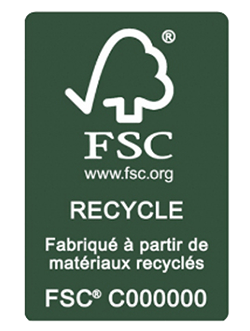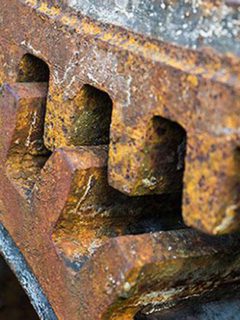From wood to paper, natural rubber and cork: there are many products with FSC logos. They guarantee that the materials used come from sustainably managed forests and are therefore a powerful tool for identifying and promoting many environmentally-friendly products to your customers. In this article, you’ll discover the finer points of FSC labels and how to use them to your company’s advantage.
1. What is an FSC logo?
International eco-labels such as the FSC label appear on all kinds of packaging and products, particularly those made from wood. In fact, FSC-certified products come from sustainably managed forests and have all followed an environmentally-friendly route through the supply chain. They inform and guarantee consumers about the origin and environmental impact of the raw materials used.
The acronym FSC stands for Forest Stewardship Council®, a global not-for-profit organisation dedicated to the responsible management of the world’s forests. The organisation has three FSC logos to indicate the origin of raw materials. There is also a standard FSC logo for promotional use. What does it look like? See the full overview below:
|
FSC Promotional
|
. FSC-certified companies use this standard variant of the FSC logo for their websites, catalogues and brochures. This logo serves only as an indicator or reference, not as an official stamp on a product or packaging. |
|
FSC 100% .
|
. The raw materials for these packaging or products come from 100% FSC-certified forests. These sustainably managed forests take into account biodiversity, the ecosystem and the local population. The numerical code at the bottom of the logo refers to the certification number allocated to a specific company. |
|
FSC Mixed
|
. The raw materials of an FSC Mixed product are of mixed origin, coming from FSC-certified forests, recycled sources and/or controlled wood. This “controlled wood” is not FSC certified, but has been collected in an acceptable manner. |
|
FSC Recycled
|
. FSC Recycled certification guarantees that products are made from reused or recycled materials, such as paper, wood or other forest materials. It sets criteria for the use of recycled materials. |
2. Why choose FSC products?
Although the FSC label is not compulsory, it does have a positive impact on your marketing. FSC labels indicate the sustainable origin of a certified product or packaging. You can combine this label with the chain of custody certificate (see below). This shows that you also have a sustainable supply chain.
These two elements ensure transparent communication between the consumer and the company, creating a good impression and boosting customer confidence. By choosing FSC-certified products, you are supporting responsible forest management worldwide.
3. Which products can carry the FSC logo?
The FSC label covers more than a million products:
- Wood and building products ;
- Paper and printing ;
- Packaging materials ;
- Textiles ;
- Cork ;
- Bamboo ;
- Forest fruits ;
- Charcoal.
For a modern consumer who cares about the environment and prefers paper packaging to plastic, you’re killing two birds with one stone. Ready to add FSC products to your range? Then take a look at what RAJA has to offer:
Variable height crate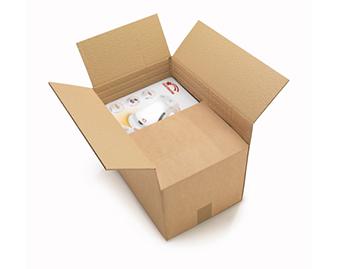 |
Padded pocket 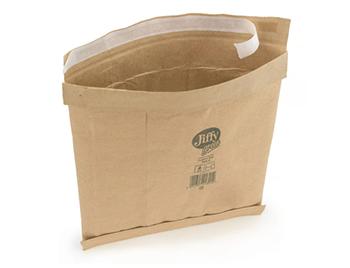 |
Padding paper . 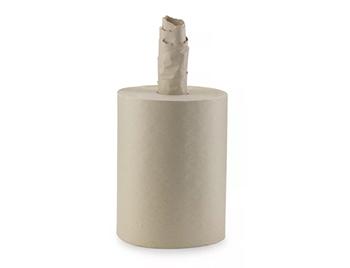 |
Printer paper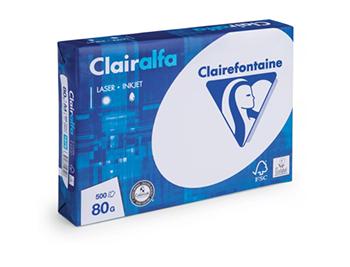 |
| – Compact packaging. – Up to 12 heights. |
– Shock-proof. – Quick seal with adhesive strip. |
– Always ready to use. – Fill empty spaces. |
– High quality. – Clear printing. |
4. How to use the FSC logo
FSC labels can be used on packaging, products or promotional materials. But be careful, because the Forest Stewardship Council strictly controls and regulates its label, and companies are only allowed to use it if they have the appropriate certificate. Find out more about the FSC certificates available below.
► 4.1 FSC forest management certificate
In this article, you have already come across the terms “sustainably managed forests” and “FSC-certified forests” several times. Both terms are associated with an FSC forestry certificate. The latter is synonymous with sustainable forest management that takes account of biodiversity, the ecosystem and the local population. Wood and other products from an FSC-certified forest can therefore be sold with an FSC label. More specifically, this certificate is only suitable for forest owners.
In 2023, Belgium will have 42,281 ha of FSC-certified forests, divided into 5 Forest Management (FM) certificates?
► 4.2 FSC Chain of Custody certificate
As a distributor or retailer, the second FSC certificate is much more interesting. Without a Chain of Custody certificate, you are not allowed to put the FSC logo on certified products or even mention it in your marketing.
This Chain of Custody (CoC) involves checking the entire supply chain on an annual basis. This procedure records the origin and transfer of the wood or wood products. This makes it possible to trace the final product or link it to FSC-certified sources.

Source : https://be.fsc.org/be-fr
Images: https: //be.fsc.org/be-fr/la-marque-fsc-la-garantie-pour-une-gestion-responsable-des-forets/les-3-labels-fsc











